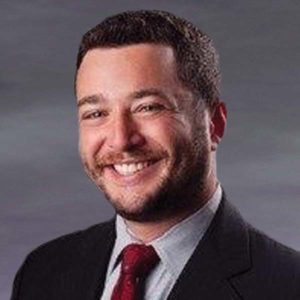
Timothy Peck, MD, cofounder and CEO of Call9, a telehealth company for patients in nursing homes, had a unique way to get the business rolling.
“I didn’t know much about nursing homes when I started this. It’s kind of in some ways, in medicine, an ignored part of the healthcare system. I had never stepped foot in a nursing home because it wasn’t part of my medical training. It wasn’t part of medical school or residency. So what I did was I lived in a nursing home for three months and learned everything I could about that experience while treating patients.”
Peck, who went to NYU School of Medicine and did his residency at Harvard, spent time in Silicon Valley at the famous incubator, Y Combinator. As the first class of healthcare companies in the Y Combinator, he came up with the idea to launch a telehealth company that caters to the nursing home community. When these patients are transferred to the ED from nursing home, it’s a no win situation for providers, patients and their families.
“[Many] of them have dementia and almost all of them become delirious and confused upon transferring them to the emergency department. And when they’re there, their advocates and family are rarely with them and we don’t have time to call their family in the busy emergency department. We order every test under the rainbow in order to understand them, which is not good for patients or for cost,” Peck says.
Peck spoke to Chief Executive about what he learned living in a nursing home for three months, the barriers to telehealth adoption, how being an MD prepared him to be a CEO and more. Below are excerpts from this conversation.
There are a lot of telehealth companies in the market, it’s an emerging field. What makes you guys different, what makes you stand out amongst all these competitors in telehealth?
I think it’s the population and the market that we’ve identified. As I said, there’s a large population that’s dealing with emergencies. There’s 1.3 million transfers from the nursing home to the hospital every year. Medicare says that two-thirds of these transfers are avoidable and that represents a $40 billion unnecessary expense. It’s an enormous market opportunity, but also really a big problem.
How were you able to get into a nursing home?
I treated patients, I gave my service, I promised that I would be there with the patients and developed technology [for them]. We really used it as a pilot, but had a little bit of an understanding that I would treat patients and give quality care to the nursing home while I was there. So that’s how we did it. It was a nursing home on Long Island. They took a chance. It was great of them to do so.
But that was part of Y Combinator. Make something people want is what they say, and teach and go, know your user, understand your user intimately. And that’s what prompted me to do that. I wanted to understand how to build technology and services for people, right? The product development is very human centered and we used human centered designs to do what we did.
What are the barriers to telehealth adoption?
The technology for telehealth is wonderful. There are Silicon Valley engineers building our products and others out there with a lot of ability to use data to make things better and be data-driven. And I think the public in general sees that in their daily life that these technologies are possible. I think the one thing that they’re not aware of is the current laws and statutes in the U.S., especially at the federal level, are antiquated. But what’s also interesting, what they don’t know, is that there is major bipartisan support to make change right now.




0

1:00 - 5:00 pm
Over 70% of Executives Surveyed Agree: Many Strategic Planning Efforts Lack Systematic Approach Tips for Enhancing Your Strategic Planning Process
Executives expressed frustration with their current strategic planning process. Issues include:
Steve Rutan and Denise Harrison have put together an afternoon workshop that will provide the tools you need to address these concerns. They have worked with hundreds of executives to develop a systematic approach that will enable your team to make better decisions during strategic planning. Steve and Denise will walk you through exercises for prioritizing your lists and steps that will reset and reinvigorate your process. This will be a hands-on workshop that will enable you to think about your business as you use the tools that are being presented. If you are ready for a Strategic Planning tune-up, select this workshop in your registration form. The additional fee of $695 will be added to your total.

2:00 - 5:00 pm
Female leaders face the same issues all leaders do, but they often face additional challenges too. In this peer session, we will facilitate a discussion of best practices and how to overcome common barriers to help women leaders be more effective within and outside their organizations.
Limited space available.

10:30 - 5:00 pm
General’s Retreat at Hermitage Golf Course
Sponsored by UBS
General’s Retreat, built in 1986 with architect Gary Roger Baird, has been voted the “Best Golf Course in Nashville” and is a “must play” when visiting the Nashville, Tennessee area. With the beautiful setting along the Cumberland River, golfers of all capabilities will thoroughly enjoy the golf, scenery and hospitality.
The golf outing fee includes transportation to and from the hotel, greens/cart fees, use of practice facilities, and boxed lunch. The bus will leave the hotel at 10:30 am for a noon shotgun start and return to the hotel after the cocktail reception following the completion of the round.